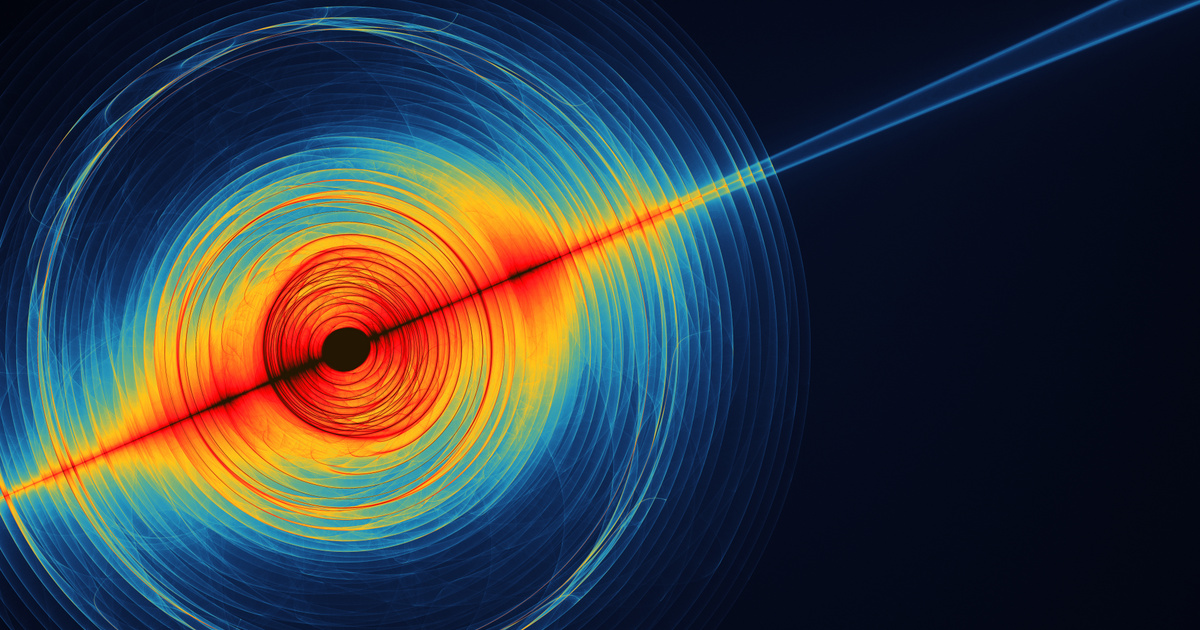A chorus of gravitational waves that can be traced back to the early universe is rocking space-time, according to a study summarizing 15 years of research work published by the North American Nanohertz Gravitational-Wave Observatory (NANOGrav) at the end of June. The research made a real breakthrough with the help of scientific innovations: with the help of radio telescopes, low-frequency and long-wave gravitational waves were detected, which are generated by the collision of galaxies and the merger of billions of the mass of the Black Sun. The holes that make up the nuclei of galaxies. ELTE researchers Bécsy Bécsy and Timothy Pennucci were also involved in the work, which was carried out by an international team of 190 people.
As is known, the first news came in September 2015 that gravitational waves had been detected with a man-made device, the laser interferometer.
In previous years, LIGO (Laser Interferometer Gravitational-Wave Observatory) detected gravitational waves that originate from rapidly spinning low-mass black holes or merging neutron stars. For example, he discovered the existence of solar mass black holes orbiting each other at a distance of a few hundred kilometers and moving around each other about a hundred times per second. The signal they transmit is 100 Hz, and has a very short wavelength of up to 100 kilometers more or less. These short wavelengths can be detected by a ground-based detector, so LIGO’s 4km arms also “felt” their vibrations.
– It can be read in ELTE advertisement.
The NANOGrav program used a completely different technical approach: they analyzed changes in the light of 68 pulsars using radio telescopes. The measurements were made using the Green Bank radio telescope in West Virginia, the Very Large Array telescope in New Mexico, and the now-destroyed Arecibo Observatory in Puerto Rico.
Cosmic arms
Pulsars are stellar cores that remain after the destruction of stars, and they are incredibly dense, containing twice the mass of the Sun in an orb the size of a city. Due to its small size, it accelerates and makes hundreds of revolutions around its axis per second. At its corners, its extremely strong magnetic field launches particles that are accelerated to near the speed of light. They were originally considered pulsars because they flashed at regular intervals. As it turns out, this is because they come to us at specific time intervals, which makes them excellent for measuring time — and this was crucial to the current research.
In order to use this to measure gravitational waves, very small variations in the light of pulsars had to be observed for many years, so the measurement, for which LIGO’s many-kilometre laser beams are used, can be performed on a large scale. wider range.
We needed a galaxy-sized detector
– explains research participant Michael Lamm, a faculty member at the SET Institute.
In essence, the Earth rocks, albeit very slightly, on waves the size of light years. We determined this by using 70-millisecond pulsars dotted across the Milky Way as an air system.
noted astronomer Scott Ransom.
Gravitational waves compress and expand space, and the light from pulsars arrives a little later or a little earlier. With this method, the largest gravitational waves can be filtered out of the data, opening a window through which we can look back at galaxy mergers.
To detect this, it was necessary to filter out the noise, but as it turned out, the background noise of large gravitational waves is stronger than expected. This is a challenge in itself: either galaxies collide too often, or the waves have other sources, and we need to update our theories about the origin of the universe.
(ELTE TTKAnd Phys.orgAnd Space.com)












































